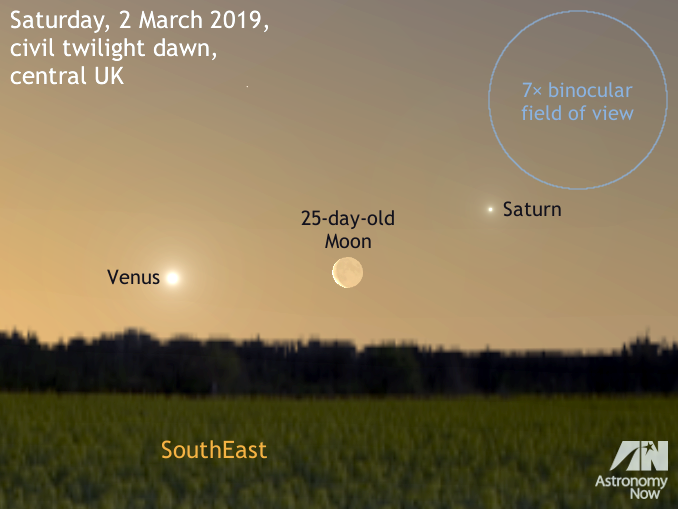
Sadly, however, the same cannot be said of planets of the dawn sky for skywatchers living in northern temperate latitudes where the converse is currently true: the morning ecliptic has a very shallow inclination to the east in bright twilight, so any planets close to the Sun seem to hug the southeastern horizon.
So, if you wish to catch a glimpse of the old waning crescent Moon nestled between conspicuous Venus and somewhat more subdued Saturn in the growing twilight of Saturday, 2 March you need to choose your viewing location and time carefully. Try too early then the sky will be darker, but the Moon and planets will be too close to the southeast horizon. Leave it too late then the Moon and planets will be higher, but in a brighter sky and Saturn may not be visible to the unaided eye.
The optimal time to look for the solar system trio is close to civil dawn, which is currently 36 minutes before sunrise in the heart of the British Isles on 2 March. Be sure to consult our interactive online Almanac to find out when civil twilight starts at your location by selecting the nearest city to you. (Click here if you’d like to read our former guide to using the Almanac.)
If you do manage to catch a glimpse of Venus, the 25-day-old Moon and Saturn on Saturday morning, contemplate the fact that magnitude -4.1 Venus lies 161 million kilometres from Earth, some four hundred times farther away than the slim lunar crescent in almost the same line of sight. Magnitude +0.6 Saturn is seventy-five times fainter than its dazzling planetary sibling, but at 1,588 million kilometres distant it’s nearly ten times farther away from us than Venus.



